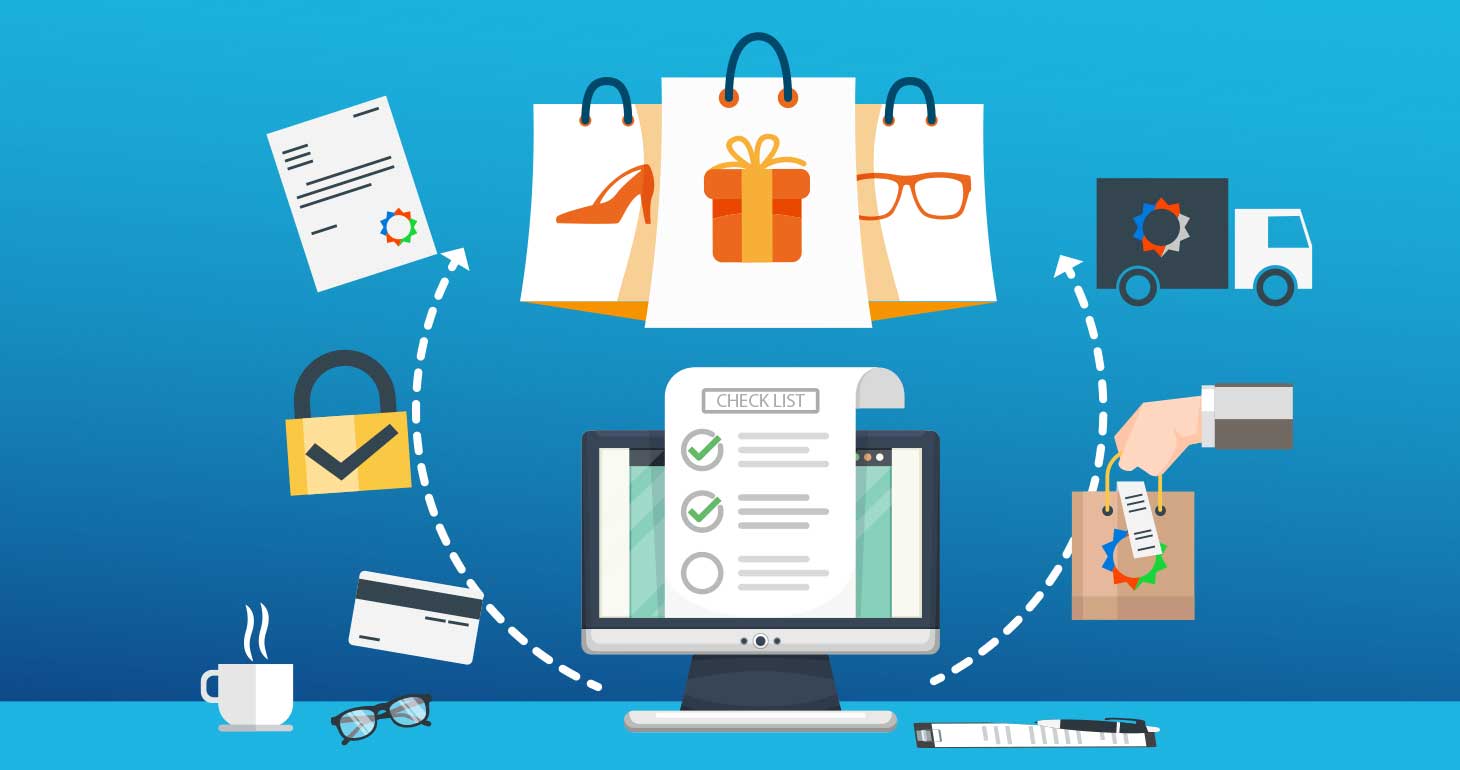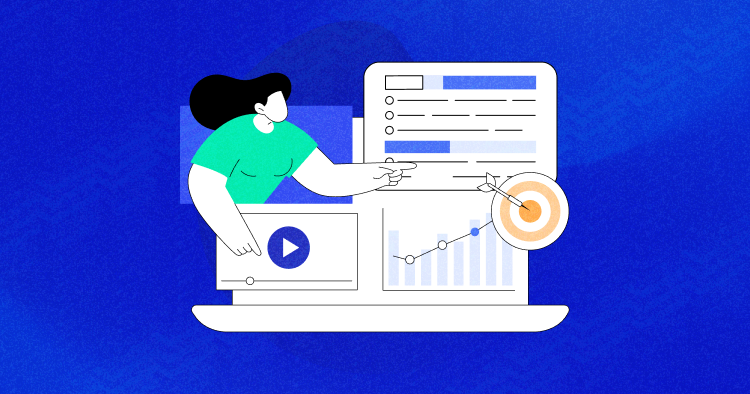
Setting up an ecommerce store is a daunting prospect. There are so many things that need your attention and there is little guarantee of success.
However, this uncertainty is no reason why you should not launch an ecommerce store. Help is available in the form of blogs, videos and expert opinion. The problem is that all the information is so scattered that it takes a lot of time to collect and absorb the knowledge.
In order to help first timers who are looking to take their first dip into the stormy waters of ecommerce, here is a checklist that covers all important areas of setting up and launching an ecommerce store.
Unlock Hidden Profits With Cloudways’ FREE Tool
Stop wondering where your sales are coming from (or going!). Download our FREE Ecommerce Sales Analysis Template and gain game-changing insights into product performance, channel effectiveness, and more!
Thank You
Your list is on it’s Way to Your Inbox.
1. Website Design and Layout
By now, it is common knowledge that an ecommerce store has less than 5 seconds to grab the attention of the visitors. The design and the layout of the store plays an essential part in this challenge. Two simple tips in this context are:
Design Better Interfaces
Design is the first (and in many cases, the only) point of contact between your store and the potential customers. In order to be a success, you need a design that is simple, colorful and non-obtrusive.
A good example of great design is jet.com. Here, prominent products are presented at the very top, followed by discounts and deals. A user dropping on the homepage will instantly know which products are available on discount.
Come up with Flowing UI
The good news is that except for some basic guidelines, there is little that stops you from creating attractive and creative UI and store layouts. This means you have all the liberty to either add a banner at the top, or just display square boxes to present store categories.
Ecommerce UX: 10 Best Design Practices for Your Inspiration
2. Content, Search, and Social Optimization
Without proper optimization, your ecommerce store has no hope of being at the top of SERP. Optimizing the store can be divided into two basic aspects:
Create Catchy Content
Ecommerce is all about attractive content that engages the audience. At the minimum, ecommerce stores have three types of pages – landing pages, product detail pages, and policy pages. The content on all these pages need different tone and complexity.
Optimize for Organic Search
Once the content has been created, the next tip is about optimizing it for higher search engine results rankings. This generally requires changes in the structure of the content, addition of keywords and adding relevant visual elements (videos and images) to the pages.
3. Product Description Pages
The vast majority of the visitors land on product detail pages because this is where the action is. You need to be careful about the following two areas that determine the success of these pages:
Add Prominent Item Display
Commerce in general and ecommerce in particular has an age-old saying: ‘if it shows, it sells’. Ecommerce stores NEED to display the products prominently with stunning visuals and well-written descriptions.
To help the visitors make informed decisions, consider adding a price-time graph that shows the price of the product at a certain time.
Second, most popular online stores including Rakuten, Best Buy, and Newegg now offer competitor price comparison on the product pages, implying that their prices are the lowest.
Visuals Help Sell Products
Ecommerce developers can make product page more attractive by adding several images of the product. In addition, videos intro review add credibility to the the product and help the visitor come to a decision.
Amazon is doing this pretty decently by adding reviews, product insights, specs, and product videos as part of the product description content.
4. Checkout Process
According to Baymard, more than 30 percent users leave a checkout process because of its complexity and/or length. Further research by Kissmetrics says, a checkout process should be flawless and shouldn’t prompt user to signup while checking out.
Make Checkout Friendly
The checkout process should not take more than three clicks from the start to the finalization of the transaction. New account creation should come after the deal and should not be a mandatory part of the experience.
Add Giveaways to Checkout
A good way to incite users to click ‘buy’ instead of the back button is to offer them freebies. For instance, a a $5 OFF coupon will help the visitors remember your store and will increase the number of returning customers.
5. Support Pages
Many store owners do not realize the importance of support pages in the overall context of ecommerce store management. For many users, these pages are the first resource for store return policies and other relevant information. When it comes to support pages, experts suggest:
Keep Them Simple
The privacy policy, return policy, and refund policy should explicitly mention the details of the process. you should make sure that the policies are easy to read and comprehend so that the users do not need to contact customer support for help. Bullet points are a welcome sight on these pages.
6. Mobile, Voice, and Virtual Reality Presence
Many store owners, even those who think they are on the cutting edge of the technology forget about the increasing impact of technologies such as Voice Search and Virtual Reality. An ecommerce store should be designed to accommodate these emerging technologies as core part of the design.
Get a Mobile App
As an ecommerce store, your first priority should be to a custom developed mobile app. Make sure that the app is not just an application wrapper for your website. Instead, invest in proper platform optimized app that offer a complete experience to the users.
Focus on Voice Search
Google reports that 27% of the global population now use voice search when searching online. It’s simply not something that you can ignore. This means that optimizing your store for voice search is an essential aspect of overall store search engine optimization.
7. Digital Outreach and Paid Marketing
Without a proper marketing strategy, your ecommerce store is just like a capsized boat in the middle of the ocean. The store’s digital marketing strategy should include a mix of organic and paid marketing tactics.
Mix up Social, Organic, and Influencer Marketing
Too much salt can ruin the taste of the soup. Similarly too much emphasis on one aspect of the marketing could easily negate the impact of other tactics. Try to be creative with your mix of social, search engine and influencer marketing.
Use Paid Search For Maximum Impact
Most ecommerce stores create the hype, but don’t follow it with paid targeting. This leads to a failure of the marketing strategy. Since stores do not have sufficient SEO and marketing traction in the beginning, paid marketing could prove to be a great help in getting the ball rolling.
8. Analytics and Tracking
Many store owners ignore analytics and tracking of store statistics, simply because the topic appears too far away from the business processes of the store. However, these activities provide data that is invaluable for formulating strategies.
Employ Web Analytics Tools
Tracking tools are the best option for gauging the performance of the store. The lineup of the tools tracks traffic, user activity on the store and the the user journey. This means you need a mix of traffic analytics, heatmap analysis and user tracking tools at your store.
Google Search Console (GSA) tracks a lot of statistics including indexed pages and the number of clicks on daily basis.
9. Logistics Management
Logistics is perhaps the “unglamorous” aspect of ecommerce management. it is also the area that present the most of the headaches and customer issues for the store management. Here are two important areas that you need to focus on:
Order Delivery: Outsource or in-house?
The most important decision that every ecommerce store faces is whether to outsource delivery or handle it in-house? I believe the decision should be based on the shipping process of the store and quality of the product delivered. A good way to start is to outsource the order delivery process in the initial phases.
Smart Inventory Management
It is a good idea to have zero inventory when starting out. This might delay order fulfilment, but it will still keep the costs low. Smart inventory solutions are a great way of tracking and minimizing inventory costs.
Bonus Tip: Always choose an optimized ecommerce hosting to ensure your store loads with lightning speed.
Final Words!
It isn’t hard to succeed at setting up your ecommerce store in 2022, but unlike the previous decade, it will take more time. So, give it time. Try, fail, and then try again to flourish.
Sajjad Shahid
Sajjad is an Ecommerce Community Manager at Cloudways. He loves helping out Ecommerce store owners, merchants and marketers in establishing their businesses and startups. Sajjad enjoys playing table tennis and cricket over the weekend.
